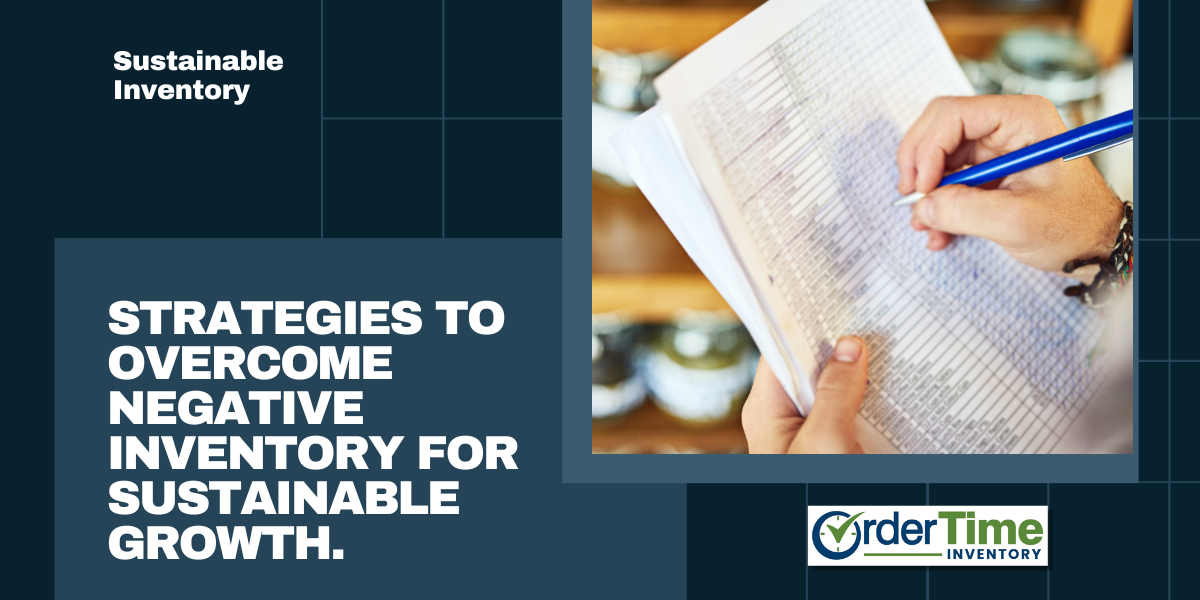Uncover the risks of negative inventory in the business world and learn strategies for lasting success. Delve into issues like accounting integration, customer satisfaction, financial implications, and operational disruptions. Explore the crucial role of accurate data in decision-making and the compliance risks associated with negative inventory. Discover a roadmap to success, emphasizing robust inventory management systems, optimal reorder points, supplier collaboration, employee training, and continuous improvement. Choose resilience and strategic planning for sustainable growth amid market dynamics. Don't let negative inventory jeopardize your business – gain insights and take proactive measures now.
Where the race to boost sales meets the unpredictable ebb and flow of production, a seemingly quick solution often emerges – negative inventory. However, beneath the surface lies a host of pitfalls that can jeopardize the long-term success of your enterprise. In this blog post, we'll explore the dangers associated with negative inventory and unveil practical strategies to safeguard your business while promoting sustainable growth.
![]() In the context of Order Time Cloud Inventory, a notable challenge arises with negative inventory when creating new transactions. When adding an item to a sales order that is in negative inventory, you can include the item quantity, but the value in the line item field remains $0. This poses a significant issue. From this point, the only recourse to reintroduce a value amount into your inventory is either to receive new inventory or to create an adjustment.
In the context of Order Time Cloud Inventory, a notable challenge arises with negative inventory when creating new transactions. When adding an item to a sales order that is in negative inventory, you can include the item quantity, but the value in the line item field remains $0. This poses a significant issue. From this point, the only recourse to reintroduce a value amount into your inventory is either to receive new inventory or to create an adjustment.
However, this course of action can potentially lead to further complications. Receiving and adjusting inventory in Order Time to compensate for inventory shortages may disrupt the accurate tracking of inventory. This, in turn, impacts the proper recording of transactions and compromises the accurate reporting of various data points. It underscores the importance of addressing negative inventory effectively to maintain the integrity of inventory records and ensure accurate financial reporting.
More Negative Inventory Information 
The Temptation of Quick Fixes
In the pursuit of meeting sales targets, businesses often face the challenge of maintaining a delicate balance between supply and demand. The allure of a short-term fix, such as dipping into negative inventory, can be tempting. But, as we delve deeper, it becomes apparent that this approach carries significant consequences that can reverberate throughout your operations.
Accounting integration Issues
Negative inventory creates syncing discrepancies between your inventory management software and your accounting system. This makes it difficult to track inventory costs and reconcile accounts.
During audits, discrepancies between your physical inventory and accounting records can cause major delays and scrutiny.
A crucial aspect affected by negative inventory is customer satisfaction. Stockouts resulting from inaccurate inventory levels can lead to delayed order fulfillment, leaving customers dissatisfied. In an era where customer loyalty is paramount, the potential loss to competitors poses a real threat to your brand reputation.
Beyond customer satisfaction, the financial implications of negative inventory are substantial. Inaccuracies in inventory data can lead to budgeting and forecasting errors. Moreover, holding excess stock to compensate for negative inventory ties up capital, inflating carrying costs and hindering financial efficiency.
Operational challenges loom large when negative inventory is part of the equation. Disrupted production schedules, strained supplier relationships, and supply chain hiccups are common consequences. Maintaining operational efficiency becomes increasingly difficult when mismanagement of inventory takes center stage.
Accurate reporting is the bedrock of sound decision-making, and negative inventory can throw a wrench into this critical aspect of business operations. Flawed decisions based on unreliable data can have far-reaching consequences, highlighting the importance of maintaining accurate and reliable inventory reporting.
In industries governed by stringent regulations, negative inventory poses a compliance risk. Non-compliance can lead to fines and legal repercussions. A solid inventory management strategy is essential to ensure adherence to industry standards and regulatory requirements.

A Roadmap to Success
Acknowledging the pitfalls of negative inventory is the first step towards developing a resilient business strategy. Here are some practical alternatives and strategies to consider:
- Get a system like Order Time Inventory that can shut off negative inventory. Negative inventory is a preference that can be turned off and on by admin users.
- Setting Appropriate Reorder Points: Establish optimal reorder points and safety stock levels to prevent stockouts.
- Transact your inventory in the proper order; receive purchase orders, create work orders (production if applicable) then ship your orders.
- Collaborating with Suppliers: Foster open communication with suppliers to address lead time issues and enhance collaboration on demand forecasting.
- Receive inventory the minute it comes in based your vendors packing slip. Do not wait until the invoice from the vendor.
- If applicable, keep up with work orders (production) so that finished goods are incremented and raw materials and components are decremented.
- In a pinch, create an inventory adjustment with a notation on why such and adjustment was necessary.
- Do inventory counts less frequently. If you transaction your inventory in the proper order, you will notice that the need to do inventory counts will decrease.
- Employee Training: Provide comprehensive training to employees on proper inventory management practices, emphasizing the importance of accurate data entry and reporting.
- Continuous Improvement: Cultivate a culture of continuous improvement, regularly reviewing and updating inventory policies to align with changing market dynamics.
A Balanced Approach for Sustainable Growth
In the intricate dance between sales and production, negative inventory might offer a fleeting sense of relief, but the long-term consequences can be severe. By understanding the risks and embracing alternative strategies, businesses can navigate the challenges of inventory management, ensuring not only short-term survival but also long-term, sustainable growth. Choose the path of resilience and strategic planning, and your business will thrive amidst the ever-changing dynamics of the marketplace.









